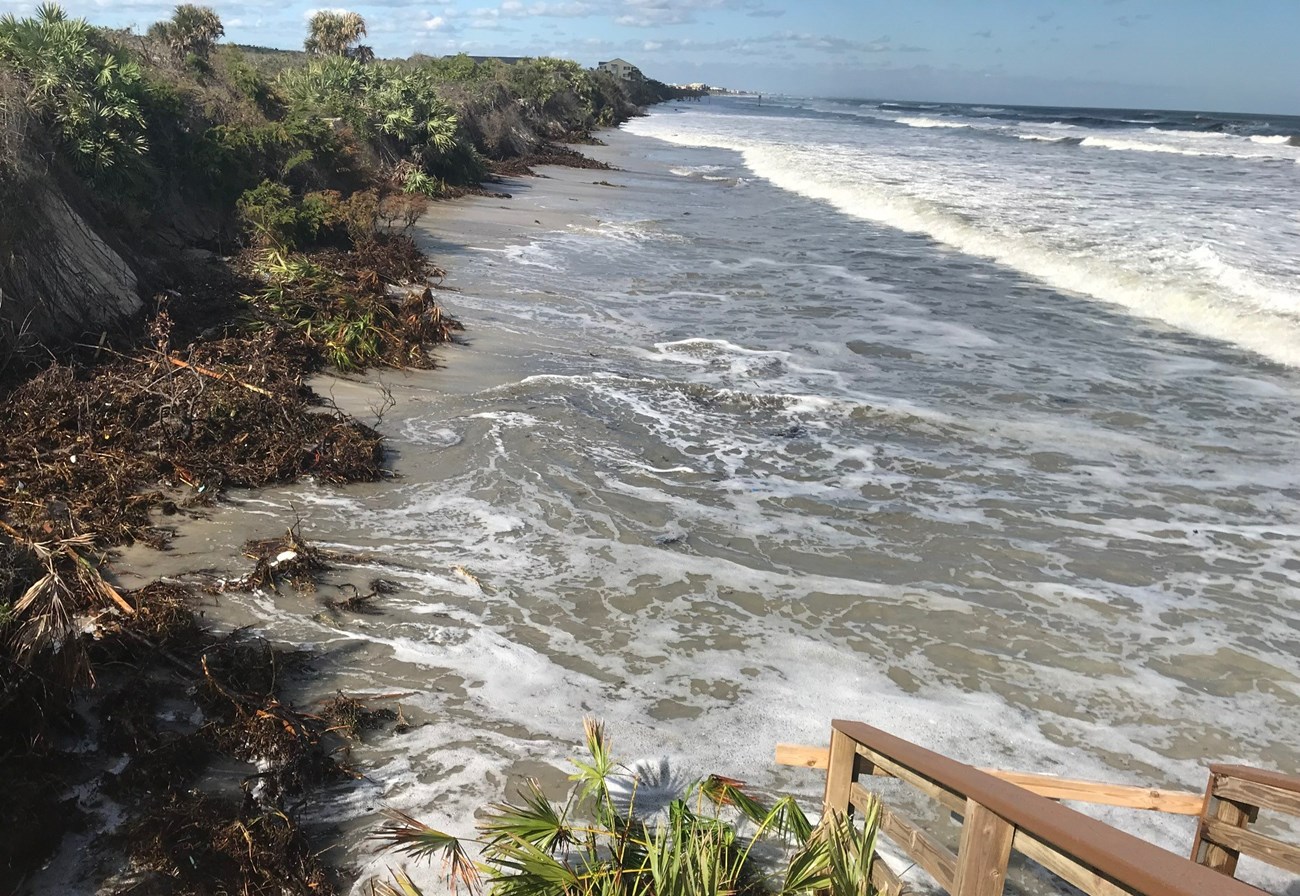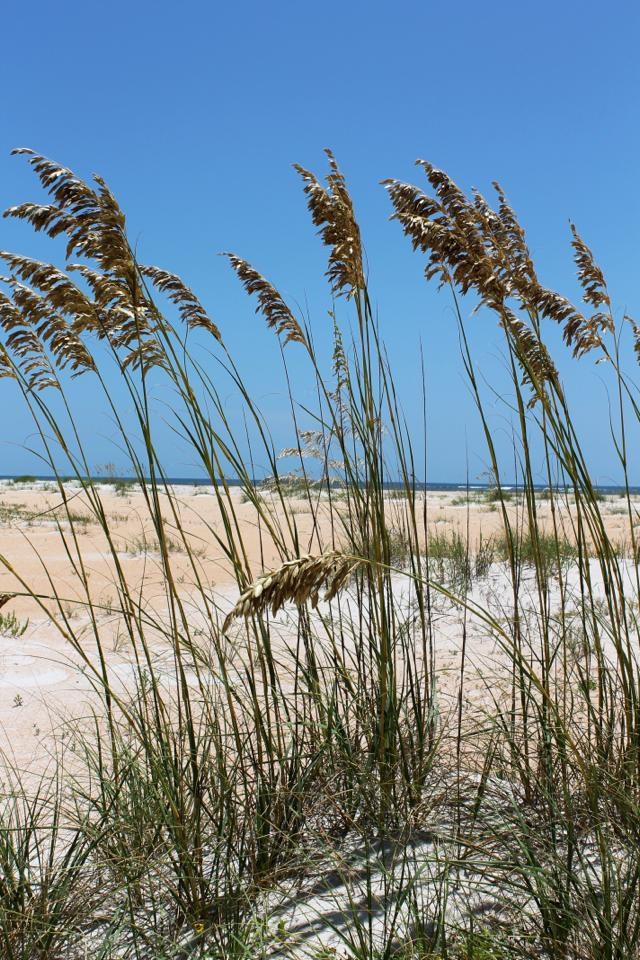|
Visit our keyboard shortcuts docs for details
It may feel "second nature" to protect our home and family, but how can we protect our parks in the face of climate change? Learn how you can join the staff of Fort Matanzas National Monument in protecting coastal habitats threatened by climate change. 
Sea Level RiseTwo phenomena related to climate change contribute to accelerated global sea level rise:
Greenhouse gases trap heat in our atmosphere resulting in rising ocean temperatures. Sources of greenhouse gases include the use of fossil fuels such as coal, oil, and natural gas to power our societies, which releases carbon dioxide and methane into the atmosphere; methane sources also include emissions from landfills and agriculture. 
Extreme WeatherClimate change also contributes to extreme weather: tropical storms, heat waves, droughts, wildfire, rain and flooding, and more. 
How are sea level rise and extreme weather impacting Fort Matanzas?Fort Matanzas is located near low-lying coastal areas and shorelines, so rising sea levels and increased storm surge can have big impacts. Increases in erosion, saltwater intrusion, and high-tide flooding causes challenges for both cultural and natural resources. The fort is an important historic site because it represents one of the oldest masonry forts in the US, built during Spanish colonization of Florida, and is built of a unique stone called coquina. Additionally, Fort Matanzas features frequently-visited natural resources such as beaches and dunes and recreational trails through coastal hammock forest and a salt marsh, which could all be impacted by sea level rise. 
Climate change is bringing big impacts to communities along the Florida coast—including the natural environments of Fort Matanzas. For example, 100-500 feet of the Atlantic dune system has been washed away since 2014 by increased wave action related to higher sea levels, although much of the dune system remains intact for now. Continual erosion from incremental sea level rise—coupled with greater storm surge from tropical storms—have resulted in the loss of valuable habitat. For example, when rolling dunes are eroded into steep scarps, sea turtles cannot access safer nesting sites on higher ground and are forced to deposit their eggs within reach of the waterline. King tides or the passage of strong storms often destroy these nests. Many animals rely on the dunes for habitat, such as the Anastasia Island beach mouse, which is an endangered and endemic species that lives in the dune system. Given such realities, it’s more important than ever to care for and protect the shoreline home of our coastal wildlife. 
An increased risk of higher storm surge and flooding events also threatens visitor safety and the continued operation of the park. 
The driving ramp and boardwalks at Fort Matanzas, as well as the ferry docks that allow visitors to see Rattlesnake Island and visit Fort Matanzas itself, were closed for months due to damage from hurricanes Matthew and Irma in 2016 and 2017. 
Taking Action in National Parks
Nationally, the Climate Friendly Parks (CFP) Program is one of many initiatives supporting the National Park Service Green Parks Plan. The CFP program provides national parks with support to address climate change. The goals of the CFP Program include:

What can YOU do during your visit to Fort Matanzas to help?You too have an important role to play. Both footsteps and car tires damage plants and destroy delicate root fibers. Staying off the dunes during your visit allows native plants to flourish, take root and guard against erosion. 

Second NatureWith over half a million people visiting the park every year, the small things we do can make a big difference! What other actions should we make “second nature” to protect the future of the homes, parks, and habitats most important to us? Reference
|
Last updated: May 6, 2022
